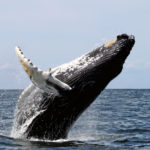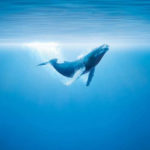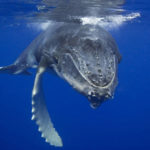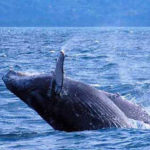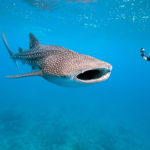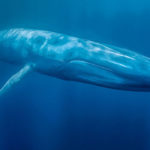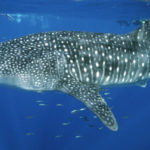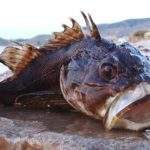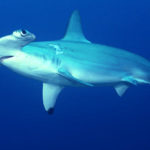Humpback whales – information
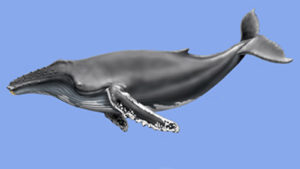 In the sea waters of the Southern Hemisphere there is a huge number of different species of mammals and fish. Not the last place among them is occupied by a humpback – a humpback whale. They called him that because when swimming he strongly bends his back. This animal in the fertile summer months frequented the waters of the Southern Ocean. In winter, it migrates to the north and spends the cold season in warm sub-tropical and tropical waters.
In the sea waters of the Southern Hemisphere there is a huge number of different species of mammals and fish. Not the last place among them is occupied by a humpback – a humpback whale. They called him that because when swimming he strongly bends his back. This animal in the fertile summer months frequented the waters of the Southern Ocean. In winter, it migrates to the north and spends the cold season in warm sub-tropical and tropical waters.
In them, he mates, multiplies, and with the onset of spring again rushes to his beloved south of the heart. Thrust to the Antarctic region of the humpback is so great that it overcomes the distance of several thousand kilometers, in order to be in a cool sea water in a month and a half. In the southern waters, the whales live in herds. In total, there are five. Each of them is in no way connected with the others and represents a separate population. Within each herd, whales form small groups of 4-5 individuals. Sometimes males swim in proud solitude, and females make up the company only their cubs.
Female females in humpback whales are somewhat larger than males. Ladies reach a length of 14 meters, males per meter shorter. The average weight of a humpback is 35 tons. There are individuals with a larger mass. The maximum, which is known, is 48 tons. The humpback has a dense, strong body. Its front part is thicker than the back, and the head is very massive and in size it takes almost a quarter of the length of the entire carcass. The throat and belly have longitudinal grooves. They are rare, with a total of 20.
Dorsal fin very small and pushed to the tail. The tail is large and very strong – with coarse and uneven edges. Pectoral fins long. They also have rough and uneven edges, in addition, they have large bumps, which are skin growths. Similar growths are on the upper and lower jaws.
In the mouth of the animal is a black whale. It consists of several hundred plates. Their length reaches a meter, and they hang from the upper palate. On the edges of the plate have fringe. During the hunt, the whale opens its mouth and swallows plankton. Then, using his tongue, he squeezes the water out, and the small marine organisms remain in the mouth. They settle on the whale whiskers, and the animal licks them with the tongue. In this way the humpback feeds.
The color of the mammal’s skin has various shades. The upper part of the body in the humpback whale is black, sometimes dark gray. The lower part of the body is dark and diluted with large white spots of arbitrary shape. In rare cases, the abdomen is completely white. Fins on top black, from below white. There are animals with completely black or white fins. On the lower part of the tail there are also white spots. For each individual they are strictly individual.
